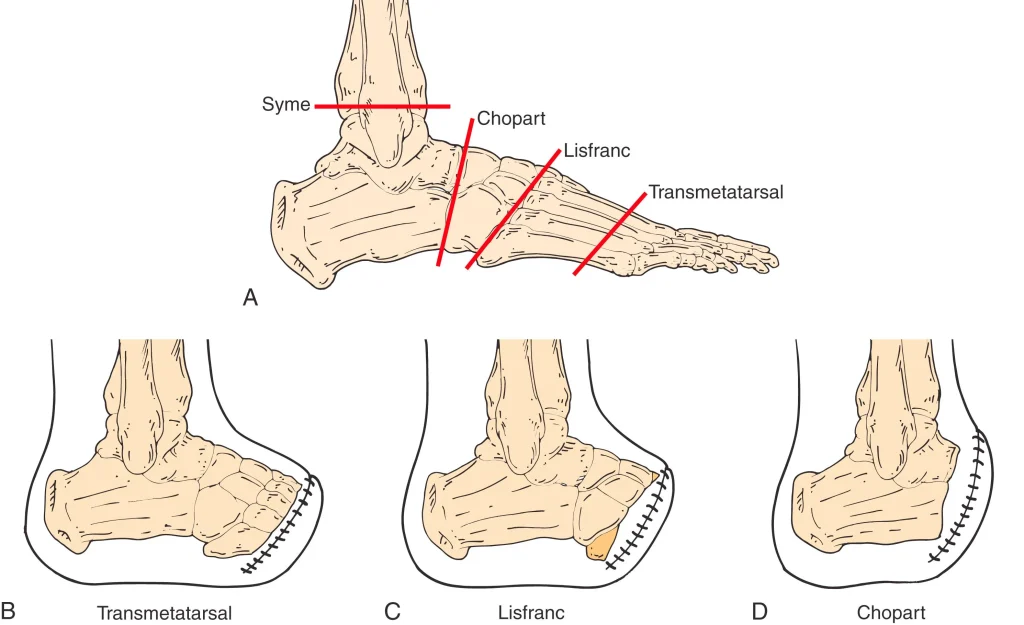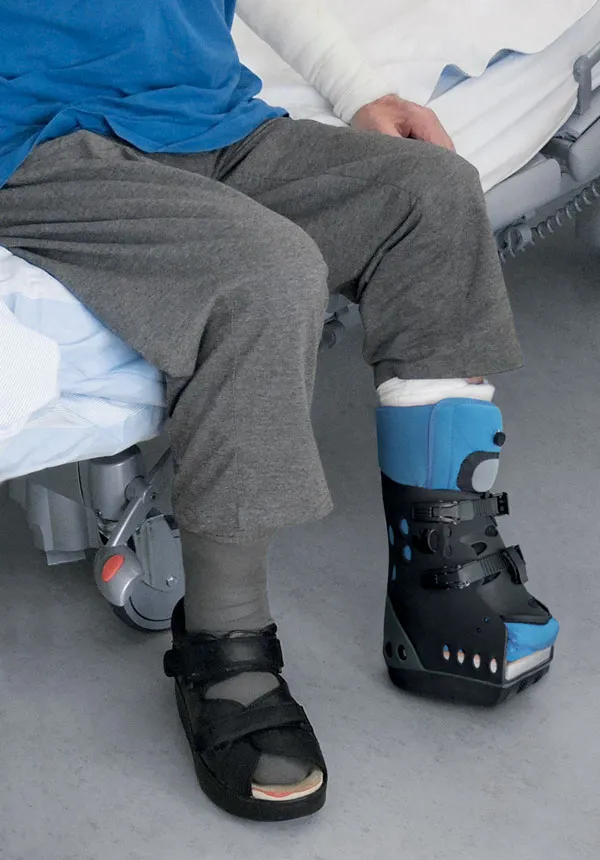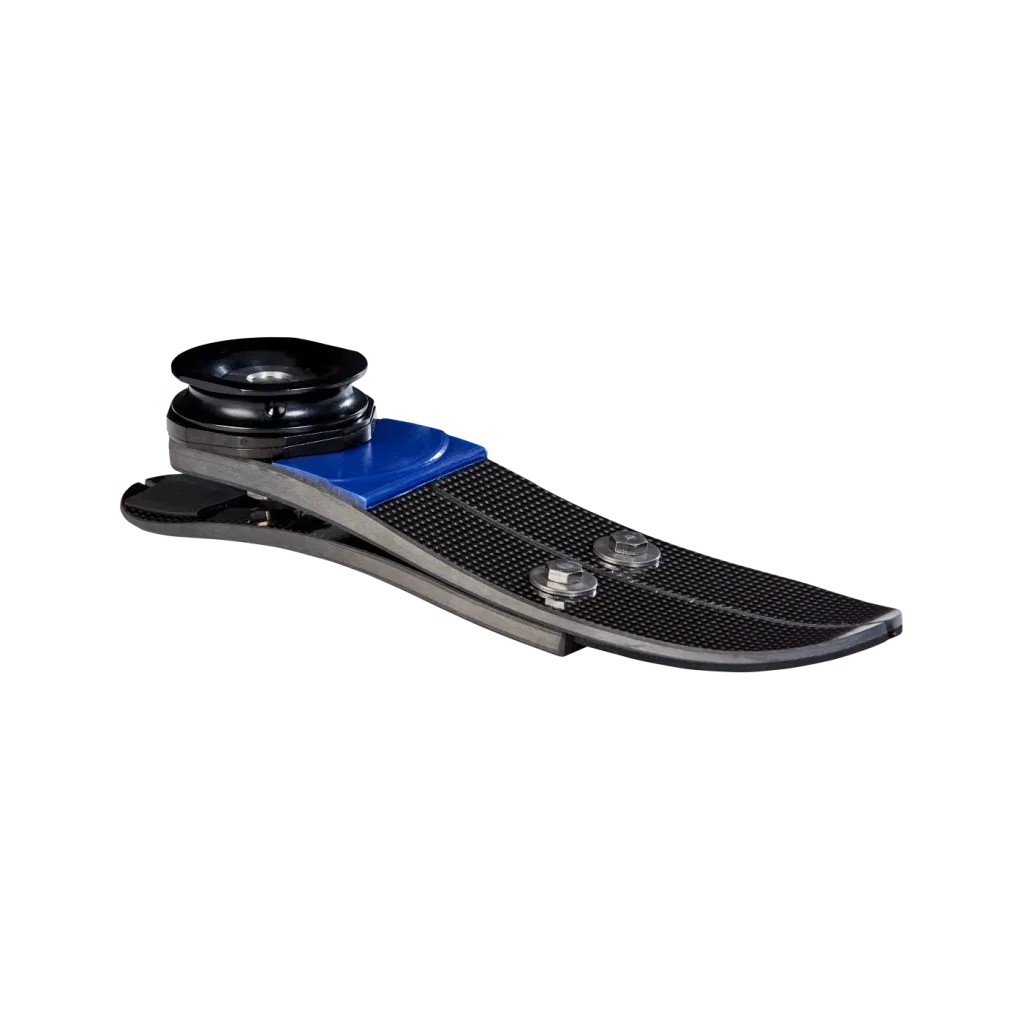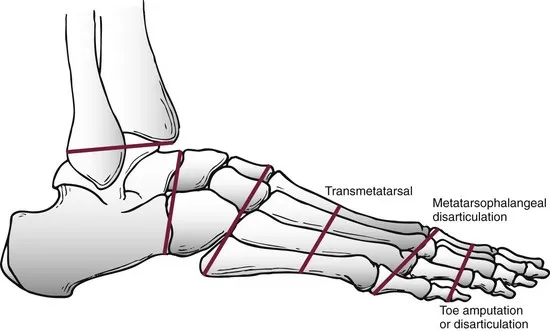A Chopart foot amputation is a surgery where the front part of the foot is removed, but the heel and ankle are kept intact, helping you stay mobile. It’s usually done when there’s severe damage from an injury, infection, or diabetes. While it can affect your balance, most people can walk again with the right prosthetic or foot support and good rehab. It’s a way to save as much of the foot as possible and still lead an active, independent life.

Foot loss or any limb loss is physically and mentally traumatizing. Till a few years back, an amputation of the feet fully or partially, could have severely affected your mobility, but today, there are excellent possibilities. Today, people can walk despite having lost part of their foot.
In a Chopart foot amputation, the front part of the foot is removed, but the heel and ankle are preserved. Thus, helping patients stay mobile and balanced. It allows them to move around even after the surgery. This surgery removes the damaged part of the foot owing to various foot diseases, injuries, and other issues.
In this blog, we will explain the Chopart amputation and joint, compare it to the Lisfranc procedure, and examine how prosthetic support helps patients be independent.
What Is a Foot Amputation?
A foot amputation is the removal of the complete foot or part of it through surgery, or when the foot is damaged in an accident or injured. The amputated part may be a toe or the whole foot.
Why is a foot amputated?
Foot amputation may be necessary due to
- Diabetes: Poorly managed diabetes can lead to nerve damage and reduced blood flow, causing wounds or infections that don’t heal.
- Peripheral Vascular Disease (PVD): This condition limits blood flow to the foot, leading to tissue death.
- Severe Accidents: Traumatic injuries that crush or damage the foot beyond repair.
- Serious Infections: Deep bone infections (osteomyelitis) that don’t respond to treatment.
- Tumors or Cancer: Malignant growths in the foot that cannot be treated with other methods.
Effects of Foot Amputation
- Difficulty in walking after amputation, which is higher up the leg.
- Using a Prosthetic foot takes time.
- It is hard to lose a foot and normal to feel sad, anxious, or frustrated.
What Is a Chopart Joint?
The Chopart refers to the joint at the centre of your foot. It is here that two tiny bones link the foot’s back part to the front. Thus, it enables the foot to move and bend when walking or running.
What Is a Chopart Amputation?
A Chopart amputation is a surgery done to remove the front of the foot, the midfoot and forefoot at the midtarsal joint. It helps keep the heel and ankle intact for maintaining weight-bearing ability.
Why Is a Chopart Amputation Performed?
Doctors recommend and perform a Chopart amputation to remove the damaged front part of the foot when it is beyond salvage. It may happen because of:
- Advanced foot infections (diabetes related).
- Severe trauma from injuries or accidents.
- Foot ulcers which are caused by poor blood circulation.
- Infectious wounds that won’t heal.
- Cancerous growth in the foot.
Chopart amputation surgically removes the damaged part of the foot and keeps the healthy heel and ankle part of the foot intact.
What Are the Benefits of a Chopart Amputation?
Even though it removes a big part of the foot, Chopart amputation has several advantages:
- You can still use your heel to stand or walk.
- You keep more of your leg, which helps balance.
- Walking uses less energy than with a complete leg amputation.
- Some people don’t need a whole artificial leg; they need a foot support.
- Easier recovery compared to higher-level amputations
Chopart Amputation vs Lisfranc Amputation
Both Chopart and Lisfranc amputation surgeries remove a part of the foot surgically. However, a Lisfranc amputation removes the front part of the foot and toes and the bones immediately behind, while the Chopart amputation removes more of the foot.
What is the difference between Lisfranc and Chopart amputations?
| Feature | Chopart Amputation | Lisfranc Amputation |
| Part Removed | Toes + middle of the foot | Toes + front bones of the foot |
| Bones Retained | Heel + ankle | Heel + ankle + some middle foot bones |
| Walking Balance | May need more support; harder to balance | Easier to maintain balance |
| Prosthetic Needs | Often requires special prosthetic support | Easier to fit a standard prosthetic |
The Lisfranc amputation, compared to a Chopart amputation, removes less of the foot and may allow for easier walking; however, a Chopart amputation is necessary if there’s extensive damage to the foot.
Chopart Amputation Prosthesis Solution
Following a Chopart surgery, patients need a Chopart prosthesis, which is a customised device or shoe insert, to help them walk again and protect their foot. Some standard options include:
- Custom-made shoe inserts to fill the missing part
- Ankle-foot Orthosis (AFO) to keep the foot stable

- Soft silicone foot covers that mimic the natural appearance.
- Energy-return foot plates to help with walking
- Custom-made orthotic shoes with built-in padding
Frequently Asked Questions
A Chopart amputation removes the damaged front part of the foot with toes, but keeps the heel and ankle intact.
People need this surgery if the foot is partially damaged due to accidents, infections or other causes. The surgery is a process to prevent further damage and protect the rest of the foot.
Yes, you can with the help of a customisable shoe or prosthetic and proper Physical therapy.
Yes. You will need a prosthetic or foot brace to help you walk, support your foot, and prevent a foot drop.
No, because you will be administered anaesthesia during surgery, and pain medication to manage discomfort.
Healing will take a few weeks, but you will need time to adjust to walking with support or a prosthetic device, depending on your rehabilitation.
You can wear fitted shoes or braces to provide support. Your orthotist will help to find the right option.
Final Thoughts
A Chopart amputation is done when the middle part of the foot is badly damaged but there’s still a chance to save the rest of the limb. Instead of removing the whole foot, this procedure keeps the heel and ankle intact, which can really help with walking later on. Of course, it’s not without its challenges, people often deal with balance issues or changes in the shape of the foot over time. But with a skilled surgeon, proper rehab, and the right kind of orthotic or prosthetic support, many patients are able to get back on their feet and return to a more active, independent life.
“If you still have concerns regarding the Chopart amputation. Talk to KARE Prosthetics & Orthotics for a consultation with our experts.” Book a consultation today.






